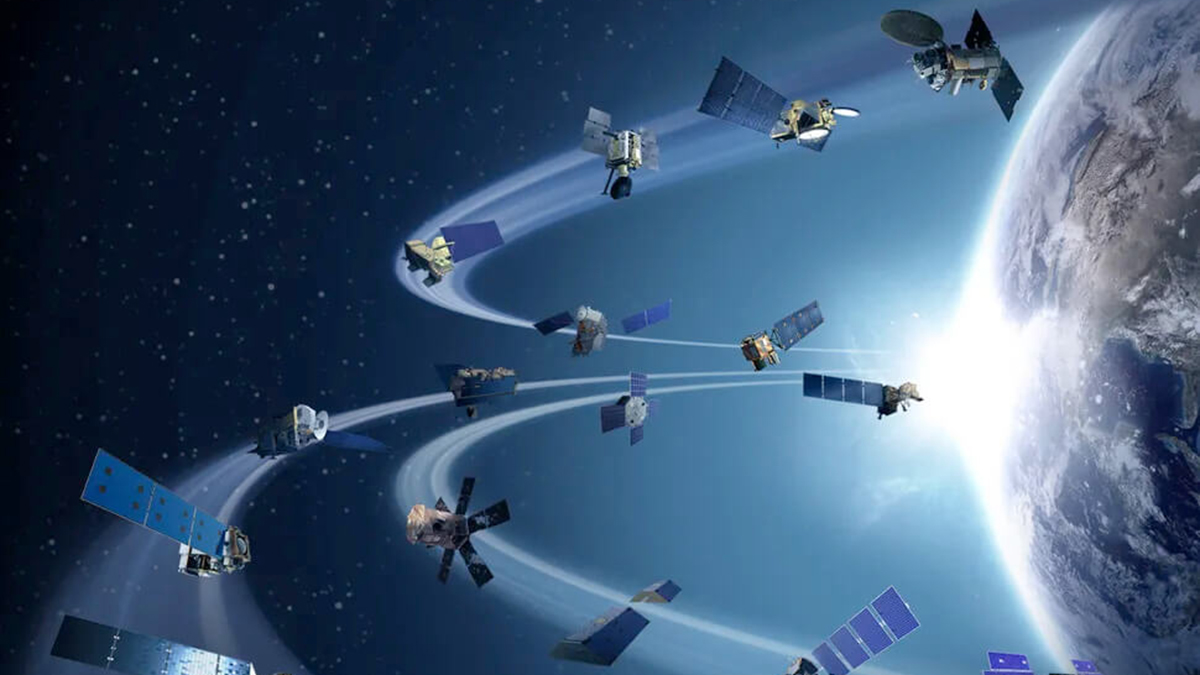Editors’ Vox is a blog from AGU’s Publications Department.
Many significant results that can now be attributed to the field of space physics were achieved before the very early scientific spacecraft missions and even before the launch of Sputnik in 1957. Alfvén waves that were theoretically discovered by Hannes Alfvén in 1942 are one of such results. However, the golden age of space physics occurred only after the first in situ data obtained by early spacecraft missions became available.
The development of space physics has gone hand-in-hand with the development of spacecraft instrumentation.
From the start of the space era, the development of space physics has gone hand-in-hand with the development of spacecraft instrumentation. Since then, advances in space physics have been unambiguously linked to the development of spacecraft instrumentation and increasingly sophisticated ground-based instrumentation. These technologies provide the scientific community with in situ and remote sensing data at much improved temporal and spatial resolutions and more physical quantities and information covering broader energy and frequency ranges about space physics processes and phenomena.
The progress of space physics by coordinated simultaneous measurements from several instruments on board of multiple space platforms and from ground observing stations and networks, each of which enables the acquisition of qualitatively superior data, provides the foundation for research based on data analysis and inspirations for development of theoretical approaches to space physics processes. To properly comprehend the meaning and interpretation of the measurements, their reliability, resolutions and limitations, it is key to understand the physical principles behind the instrumentation and measurements, details of any onboard data processing, and the overall processing chain from the raw instrumental data to the final calibrated data product available from space missions data archive or other data storage facility for public dissimulations. JGR: Space Physics is the leading journal in publishing research papers that are based on the analysis of data obtained by space physics related satellite missions. Therefore, it is quite reasonable to encourage the submission of articles describing instrumentation for the latest and future space missions and the development of novel instrumentation.
Usually the intellectual effort involved in the conceptualization, design, building and testing of a novel instrument to be carried by future spacecraft missions is as complex and difficult as the intellectual effort required for a typical JGR: Space Physics research article. In spite of the required effort to develop new instrumentation and the very high potential impact, an instrument related manuscript previously could only be submitted to JGR: Space Physics as the “Technical Report: Method” article type. While we all agree that the content of a paper is much more important than the paper type defined by a publisher, the type “Technical Report” sounds secondary to the type “Research Article”.
We are introducing a new type of paper called “Instrumentation Research Articles.”
We, the JGR: Space Physics editorial board, consider that this, together with “Technical Report” length limitations, are demotivating factors for authors to submit instrumentation manuscripts to our journal. This is why we are introducing a new type of paper called “Instrumentation Research Articles.” This type is defined as follows “Instrumentation Research Articles are expected to present new and original conceptualization and major technical developments in either space-borne or ground based instrumentation including novel experimental methodologies that are relevant to space physics. This type can also be the home for documentations for future missions at major stages of implementation and their scientific instrumentation pertinent to space physics.”
From now on this type of article is available on the journal’s submission site.
The JGR: Space Physics editors encourage submission of a wide range of manuscripts devoted to original conceptualizations, the major technical advancement of either space-borne or ground-based instruments based on new innovative physical principles or to the design of instrumentation that will enable essential new physical measurements and/or substantially improve the quality and resolution of the data with feasibility justifications. The editors will also welcome papers that provide a comprehensive description of a particular instrument or instrumentation suites that are developed for space missions scheduled to be launched in future.
—Michael Balikhin ([email protected], ![]() 0000-0002-8110-5626), University of Sheffield, United Kingdom; Natalia Ganjushkina (
0000-0002-8110-5626), University of Sheffield, United Kingdom; Natalia Ganjushkina (![]() 0000-0002-9259-850X), University of Michigan, United States; Viviane Pierrard (
0000-0002-9259-850X), University of Michigan, United States; Viviane Pierrard (![]() 0000-0001-5014-7682), Belgian Institute for Space Aeronomy, Belgium; Paul Song (
0000-0001-5014-7682), Belgian Institute for Space Aeronomy, Belgium; Paul Song (![]() 0000-0001-5938-8108), University of Massachusetts Lowell, United States; Jean-Pierre St-Maurice (
0000-0001-5938-8108), University of Massachusetts Lowell, United States; Jean-Pierre St-Maurice (![]() 0000-0001-6504-3595), University of Saskatchewan, Canada; and Qiugang Zong (
0000-0001-6504-3595), University of Saskatchewan, Canada; and Qiugang Zong (![]() 0000-0002-6414-3794), Peking University, China
0000-0002-6414-3794), Peking University, China

